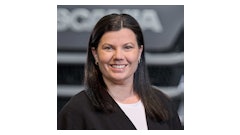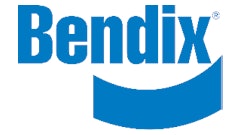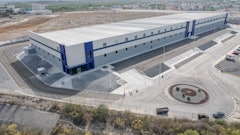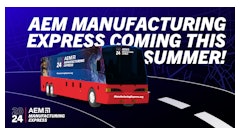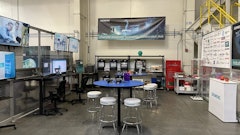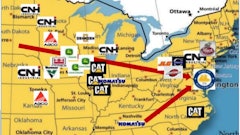In line with the overall trend observed for agricultural machinery in Europe, sales of soil working, sowing, fertilizing and plant protection equipment are declining: according to preliminary estimates, the overall market for arable farm machines in the European Union (EU) fell by around 5% to EUR 3.6 billion in 2014. For 2015, industry experts expect a further decline by around 7%.
"At the moment, few markets in Europe are displaying growth signals," says Gerd Wiesendorfer, Coordinator of the CEMA Product Groups which held its annual meeting March 10 and 11 at the Danish company Hardi to discuss current market perspectives. At the same time, he stressed that the latest trend must be seen against the peak of European sales levels in 2013. Back then, sales reached a level that was about one quarter above the average sales levels observed for the years 2008 to 2012.
Among the reasons that can explain the recent decline are the continuously weaker demand in France and the recent downward trend in Germany – the first downward trend observed there since the recession of 2009/10. Both countries account for more than 35% of total equipment sales in the EU. The outlook for the Russian market, which had performed comparatively well for certain companies in 2014, is also less positive.
In 2014, sales of soil working equipment (in terms of units) fell by 6% in Europe. Nonetheless, demand for ploughs and power harrows remained nearly stable at the high level observed in 2013. By now, general purchase orders have decreased. As Rolf Schneider (Kuhn S.A., France), Chairman of the CEMA Product Group Soil Working Equipment, explained, there are a number of interesting product trends that support the market. One such trend is the trend towards the soil conserving "on-land" version in large tractor-mounted and semi-mounted ploughs. For compact disc harrows, Schneider pointed at higher disc diameters, allowing a deeper tillage and therefore a universal usage. With regards to wear parts, manufacturers pursue a two-fold strategy: on the one hand, parts are offered with surface coating, which ensure long durability; on the other hand, more and more quick-change systems are on offer, which allow for a fast change of wear parts without additional tools.
With regards to product development, another important topic is electronic control. Carsten Hühne, spokesperson for the Agricultural Industry Electronics Foundation AEF, explained the AEF’s policies and objectives for manufacturers on the issue of section control, which has become an important standard when applying plant protection products and fertilizer. He also presented the AEF database which was recently opened up for distributors and customers. The aim of the database is to record interface problems relating to ISOBUS and provide documentation for solutions.
Speaking in his capacity as Chairman of the Plant Protection Equipment Product Group, Dirk Hollinderbäumer (Lemken GmbH & Co. KG, Germany) talked about the status of sprayer tests within the EU, underlining the importance for EU Member States to recognize the current practice of initial sprayer testing within the companies. CEMA has drawn up a corresponding position paper. In terms of product trends, he mentioned a trend towards high-end spraying equipment which helps to increase accuracy of application and thus supports the protection of the environment and the operator. GPS and single nozzle control play an increasingly important role in this context.
As in the case of soil working equipment, European market prospects for sprayers, fertilizer spreaders and seed drills are slightly weaker. In 2014, France in particular affected the overall European trend adversely. This year, it is expected that the economic downturn will affect most of the European markets.
The CEMA Product Groups are alliances of the leading European manufacturers of arable equipment implements as well as tractors and combine harvesters. The main focus is placed on the joint assessment of the market based on dedicated statistics. Currently, 20 companies from nine European countries are members of the CEMA Product Groups in the field of arable equipment implements. Prerequisite for participation is the membership in a national industry association which belongs to the European umbrella association CEMA.



